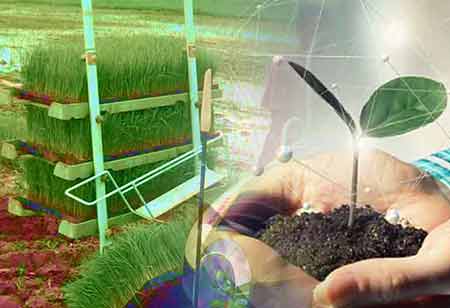Thank you for Subscribing to Agri Business Review Weekly Brief
Advantages Of Robots In The Agricultural Industry
This phenomenon's core is the requirement for considerably increased production yields.

By
Agri Business Review | Tuesday, August 16, 2022
Stay ahead of the industry with exclusive feature stories on the top companies, expert insights and the latest news delivered straight to your inbox. Subscribe today.
https://www.utilitiesbusinessreview.com/
Agricultural robots automate farmers' slow, repetitive, and dull tasks, allowing them to focus more on improving overall production yields, which will be vital as the world's population increases.
FREMONT, CA: Agriculture is quickly turning into an exciting high-tech industry, drawing new professionals, new companies, and new investors. The technology is developing rapidly, advancing farmers' production capabilities and robotics and automation technology as we know it.
This phenomenon's core is the requirement for considerably increased production yields. The UN evaluates the world population will increase to 9.7 billion in 2050. As a result, the world will require a lot more food, and farmers will face serious pressure to keep up with demand.
Agricultural robots are expanding production yields for farmers in different ways. From drones to autonomous tractors to robotic arms, the technology is being dispensed in creative and inventive applications.
Agricultural robots automate farmers' slow, repetitive and dull tasks, allowing them to focus more on enhancing overall production yields. Some of the most general robots in agriculture are utilized for:
• Harvesting and picking
• Weed control
• Autonomous mowing, pruning, seeding, spraying and thinning
• Phenotyping
• Sorting and packing
• Utility platforms.
Harvesting and picking are one of the most popular robotic applications in agriculture due to the accuracy and speed that robots can achieve to improve the size of yields and reduce waste from crops being left in the field.
These applications can be hard to automate, still. For instance, a robotic system designed to pick sweet peppers encounters many obstacles. Vision systems must determine the pepper's location and ripeness in harsh conditions, including dust, varying light intensity, temperature swings and movement created by the wind.
But it still takes more than modern vision systems to pick a pepper. A robotic arm has to navigate atmospheres with just as numerous obstacles to delicately grasp and place a pepper.
This process differs from picking and placing a metal part on an assembly line. The agricultural robotic arm must be flexible in a dynamic environment and sufficiently specific not to damage the peppers as they're being picked.
Harvesting and picking robots are turning very popular among farmers, but there are dozens of other innovative ways the agricultural industry is deploying robotic automation to enhance production yields. The demand for food is outpacing accessible farmland, and it's up to farmers to close this gap. Agricultural robots are supporting them to do just that.
Check Out This: Utilities Business Review





